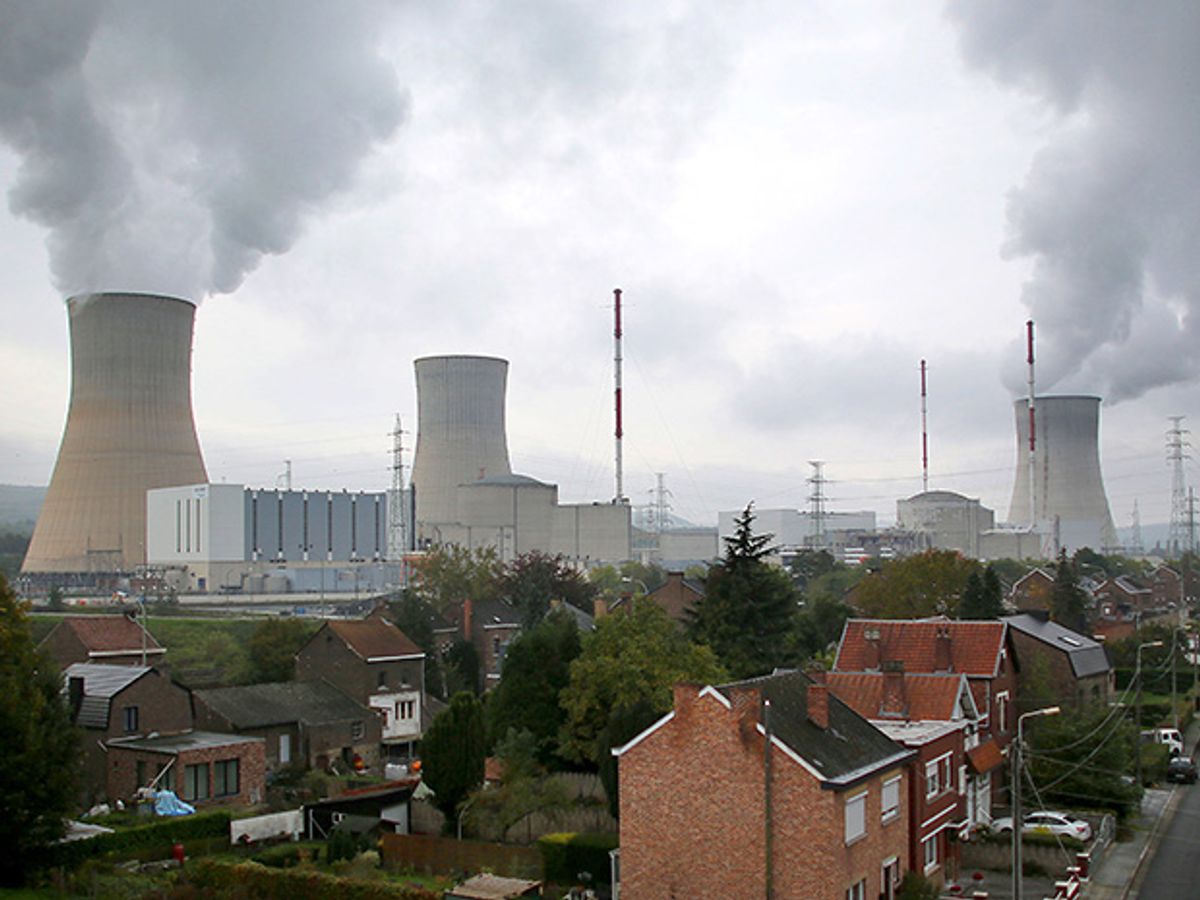Belgian nuclear authorities have authorized the restart of two reactors whose steel reactor pressure vessels (RPVs)—which contain the reactors' fissioning cores and primary coolant—are riddled with flaws. The flaws were discovered during routine maintenance in 2012. After followup ultrasonic imaging of the RPVs, experimental testing of steel samples, and extensive computational analyses, the regulators accepted the operator’s argument that the RPV flaws are decades old and do not compromise the vessels’ structural integrity.
The flaws in Belgium’s Doel 3 and Tihange 2 reactors idled the two 1,000-megawatt reactors in 2012 and again in 2014, prompting preparations for potential blackouts in Belgium and stymying European grid operators’ efforts to upgrade their system for coordinating cross-border power flows. They also prompted European regulators to call for expanded ultrasonic testing of all RPVs—a move resisted by the U.S. Nuclear Regulatory Commission.
The Belgian reactors will take about four weeks to restart, according to World Nuclear News. There’s no word yet on whether Brussels-based reactor operator Electrabel will seek to extend the operation of Tihange 2 and Doel 3, which reach their 40-year original design lifespan in 2022 and 2023, respectively. However, regulators approved 10-year extensions for the Doel plant's two older reactors last month.
An independent structural analysis by Oak Ridge National Laboratory (ORNL) in the United States affirmed the structural integrity of the Tihange 2 and Doel 3 reactors, says Richard Bass, a corporate fellow at ORNL and coauthor of the review commissioned by Belgium's Federal Agency for Nuclear Control (FANC). “As far as we’re concerned, the flaw population meets the ASME pressure vessel requirements,” says Bass, referring to the American Society of Mechanical Engineers’ RPV codes.
ORNL, the principal contractor for the U.S. Nuclear Regulatory Commission on RPV integrity issues, applied that expertise to evaluate the safety case for the Belgian reactors put forward by Electrabel. “We had about two months total, so we did everything that we could reasonably do during that period,” says Bass.
Bass and his colleagues examined the flaws—a total of 16,196 disc-shaped gaps detected in the RPVs' steel plates—and ran simulations meant to indicate whether the faults would initiate cracks under various stress scenarios. Simulations focused on the rapid temperature fluctuations that could happen, for example, in the case of a loss-of-coolant accident such as occurred at Fukushima Daiichi in 2011. They also projected the embrittlement of the RPV as it ages.
Of the thousands of flaws in the two reactors, four faults flunked ORNL’s initial simulations. Bass said that ORNL then accounted for the fact that the loading on the RPV would occur while it was warm, which makes the steel more robust during subsequent cooling—a metallurgical phenomenon that ORNL demonstrated experimentally in the 1970s and 1980s.
Three of the Belgian reactors' four questionable flaws were deemed compliant with safety regulations under pre-stress warming conditions. The remaining flaw, labeled flaw #1660, was cleared after closer scrutiny of its geometry.
The initial screenings were performed with a simplification of the shape, in which each was assumed to be a circular disc—an approach that Bass calls “very conservative." When ORNL modeled flaw #1660 and found that it is an elliptical disc (roughly 8.5 millimeters across in one direction and 10 mm across in the other), it passed muster.
"You change the problem and go back to the original representation that’s much closer to reality,” says Bass. "When we did that we found that the real flaw met the ASME code acceptance criteria.”
ORNL did not estimate how big the RPVs' margin of safety is, but it is “significant” in Bass’ expert opinion: ”There is significant margin between the driving forces on the flaws and the toughness of the material."
ORNL also concurred with Electrabel’s calculations regarding the risk posed by hydrogen diffusing into the steel and forcing open cracks during temperature swings. "We looked at what they did and it looked reasonable to us,” says Bass.
FANC, meanwhile, concurred with Electrabel’s assertion, based on ultrasonic inspections in 2012 and 2014, that the flaws were created when the RPVs were forged and are not growing over time. Still, it approved the reactors to restart on the condition that Electrabel must reinspect the RPVs when they are next shut down for refuelling.
Several independent experts argued in 2014 that FANC had overlooked the risks posed by ongoing hydrogen diffusion. Among them was Digby Macdonald, a corrosion expert at the University of California at Berkeley. (Spectrum highlighted Macdonald’s concerns in April of this year.)
FANC addressed their concerns in a special report released this week. The report cites input from several independent experts, including two proposed by Macdonald’s colleague Walter Bogaerts, a Belgian materials science expert.
The independent experts affirmed that “significant experiment and theoretical results” constrain the pressure caused by hydrogen within the RPV to low levels: about 200 kilopascals at 25 degrees Celsius and 35 kPa at 300 °C. To put that in context, computations by Electrabel suggest that even hydrogen exerting 10 megapascals of pressure within the flaws would have a “small impact” on RPV integrity.
Macdonald told IEEE Spectrum that he remains concerned about the FANC experts’ failure to “correctly address” the potential production of hydrogen within the reactor via radiolysis—the splitting of water molecules by nuclear radiation. However, he says he has yet to publish his own analysis of radiolysis.
Peter Fairley has been tracking energy technologies and their environmental implications globally for over two decades, charting engineering and policy innovations that could slash dependence on fossil fuels and the political forces fighting them. He has been a Contributing Editor with IEEE Spectrum since 2003.



